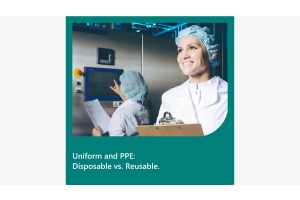materials
-
Posted: October 15, 2021Read more »
While large parts of the Australian food processing market are now automated, there are still inevitably areas where contact with food is necessary. While we typically think of this in terms of gloves, there are many other materials that also come into contact with food. How and why are some products appropriate and others not?
Hygiene and quality are two of the highest priorities. So, it is critical to assess what materials come into contact with food at all times.
Some of the more familiar materials include plastic, metal, rubber, and textiles. Some materials such as glass ae now rarely found in food production areas. Glass is often considered too dangerous to be allowed into production areas, its brittleness increases the potential of it smashing and contaminating food with sharp shards. This is obviously unacceptable, and many food facilities are glass free.
Textiles, such as cotton gloves, hair nets and wipes, are generally suitable and food
- Colour Coded Hygiene (17)
- Metal Detection (4)
- Food processing products (33)
- Product Comparisons (31)
- Food Safety (18)
- Procurement (11)
- 5S (5)






